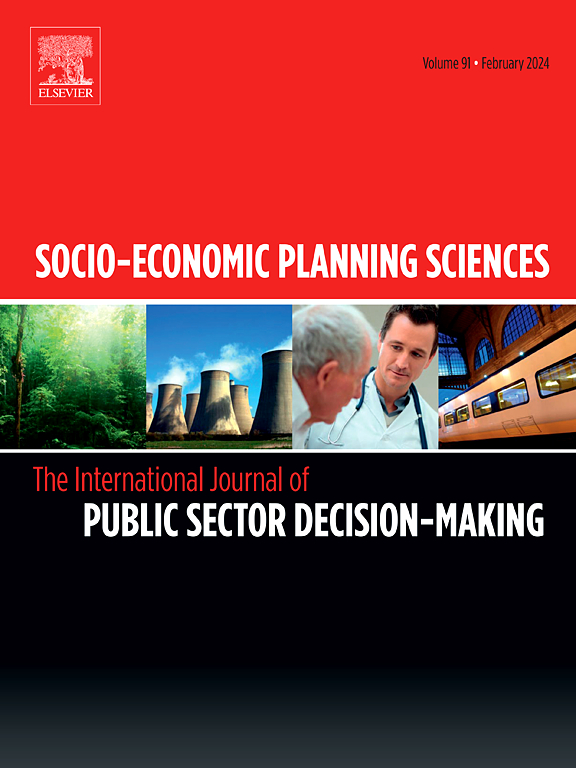Spatial-temporal evolution of coupling coordination development between circular economy and tourism in the eastern regions of China
IF 5.4
2区 经济学
Q1 ECONOMICS
引用次数: 0
Abstract
In this study, the comprehensive development index systems of circular economy (CDISCE) and tourism (CDIST) were constructed to measure the level of circular economy and tourism development in the eastern regions of China. The coupling coordination degree model (CCDM) was applied to evaluate the level of coupling coordinated development of CDISCE and CDIST. It was found that the overall development trend of circular economy and tourism in the eastern regions of China was positive. The CCDM described that the interaction between circular economy and tourism was constantly strengthening. Moreover, the modified gravity model was used to calculate the spatial connection strength of coupling coordination degree between circular economy and tourism. The highest spatial connection strength was observed in Beijing and Tianjin due to the policy support and resource concentration in the related regions. Finally, the grey model (GM) was used to predict the coupling coordination degree of the CDISCE and CDIST from 2024 to 2029 with the “good” class of accuracy. The evaluation system and analysis methods established in this study were expected to provide a basic reference for promoting the coupling coordination development between the circular economy and tourism as well as to realize regional sustainable development.
中国东部地区循环经济与旅游耦合协调发展的时空演变
本研究构建了循环经济综合发展指标体系(CDISCE)和旅游综合发展指标体系(CDIST),以衡量中国东部地区循环经济和旅游发展水平。应用耦合协调度模型(CCDM)对CDISCE与CDIST的耦合协调发展水平进行评价。研究发现,中国东部地区循环经济和旅游的总体发展趋势是积极的。CCDM表示,循环经济与旅游的互动不断加强。利用修正的引力模型计算了循环经济与旅游耦合协调度的空间联系强度。由于政策支持和资源集中,北京和天津的空间联系强度最高。最后,利用灰色模型(GM)预测2024 - 2029年CDISCE与CDIST的耦合协调度,精度为“良好”级。本研究建立的评价体系和分析方法有望为促进循环经济与旅游的耦合协调发展,实现区域可持续发展提供基础参考。
本文章由计算机程序翻译,如有差异,请以英文原文为准。
求助全文
约1分钟内获得全文
求助全文
来源期刊

Socio-economic Planning Sciences
OPERATIONS RESEARCH & MANAGEMENT SCIENCE-
CiteScore
9.40
自引率
13.10%
发文量
294
审稿时长
58 days
期刊介绍:
Studies directed toward the more effective utilization of existing resources, e.g. mathematical programming models of health care delivery systems with relevance to more effective program design; systems analysis of fire outbreaks and its relevance to the location of fire stations; statistical analysis of the efficiency of a developing country economy or industry.
Studies relating to the interaction of various segments of society and technology, e.g. the effects of government health policies on the utilization and design of hospital facilities; the relationship between housing density and the demands on public transportation or other service facilities: patterns and implications of urban development and air or water pollution.
Studies devoted to the anticipations of and response to future needs for social, health and other human services, e.g. the relationship between industrial growth and the development of educational resources in affected areas; investigation of future demands for material and child health resources in a developing country; design of effective recycling in an urban setting.
 求助内容:
求助内容: 应助结果提醒方式:
应助结果提醒方式:


